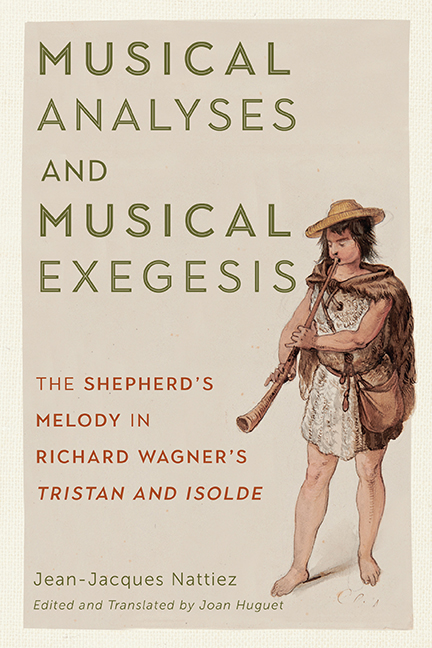 Musical Analyses and Musical Exegesis
Musical Analyses and Musical Exegesis Book contents
- Frontmatter
- Dedication
- Contents
- Foreword to the French Edition
- Preface
- Introduction: The English-Horn Solo, My Approach, and Models of Analysis and Musical Meaning
- Part I Immanent Analysis of the English-Horn Solo’s Musical Structures
- Part II Esthesic Analysis
- Part III Poietic Analysis
- Part IV Hermeneutics
- Conclusion: The Validity of Structural Analyses and Interpretations
- Bibliography
- Index
2 - Formenlehre Analyses
Published online by Cambridge University Press: 02 June 2021
- Frontmatter
- Dedication
- Contents
- Foreword to the French Edition
- Preface
- Introduction: The English-Horn Solo, My Approach, and Models of Analysis and Musical Meaning
- Part I Immanent Analysis of the English-Horn Solo’s Musical Structures
- Part II Esthesic Analysis
- Part III Poietic Analysis
- Part IV Hermeneutics
- Conclusion: The Validity of Structural Analyses and Interpretations
- Bibliography
- Index
Summary
Principles of Formenlehre Analysis
Those who are familiar with the musicological and analytical literature will perhaps be surprised that I chose to begin my immanent-level study of the solo with prolongational and implication-realization models of linear analysis. At the beginning of chapter 1, I justified this choice based on the fact that the first parameter that we confront when listening to music is the process of tension and release that linear analysis describes. Certainly, though, analysis has historically begun with Formenlehre. Moreover, analysis of a piece's form often serves to frame the many remarks that can be made on the subject of its organization, doubtless for pedagogical reasons. Nineteenth-century scholars widely believed that composers adopted or modified the musical forms that were created by their predecessors and described by theorists. From this perspective, Allen Forte proposes a Formenlehre analysis of the orchestrated solo before discussing his prolongational analysis. However, there are some precedents for the approach that I have chosen here. Heinrich Schenker only discusses form in the fifth and final chapter of Free Composition. In his discussion of Schenker's work, Célestin Deliège only mentions form once. Discussion of form is similarly limited in Nicolas Meeùs's introduction to Schenker. It is likely that these authors chose this topical ordering with the goal of examining a piece's hierarchical structures from the background leading to the foreground. Fred Lerdahl also provides his formal analysis only after having studied the solo's prolongational structure, and both Annie Labussière and I derive our formal analyses from our linear analyses. There is yet another reason to proceed in this fashion. At the end of chapter 1, it appeared that, in spite of the different methodological foundations for each of the linear analyses that we compared, their associated formal analyses were quite similar. The opposite is true, in fact: there are many differences between the formal analyses of the solo, as we will see in this chapter. We must ask ourselves why this is the case.
In both musicological research and pedagogy, it is customary to speak of Formenlehre analysis as a search for a formal label: sonata form, rondo form, song form, ternary form, and so forth.
- Type
- Chapter
- Information
- Musical Analyses and Musical ExegesisThe Shepherd's Melody in Richard Wagner's <I>Tristan and Isolde</I>, pp. 85 - 116Publisher: Boydell & BrewerPrint publication year: 2021
